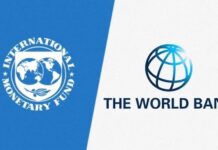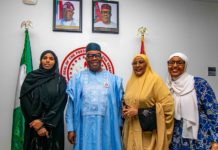A stark hunger outlook means finding new ways to reach Somalis in need
FAO Representative in Somalia Etienne Peterschmitt discusses COVID-19 and its impacts on vulnerable groups and the UN agency’s work.
What is the situation like in Somalia at present?
Somalia is a challenging place to operate even in a normal year. Insecurity makes it difficult to reach people in rural areas where food security is extremely volatile. On top of the threat of coronavirus, many communities are also dealing with Desert Locusts and severe floods during Somalia’s Gu main cropping season.
Coronavirus was first detected in the country in mid-March and since then Somalia has recorded one of the highest caseloads in East Africa. Movement and trade restrictions triggered by the virus have not only impacted how we operate in Somalia but they may also drive up the number of people in need of emergency food and livelihoods support.
What are your concerns for the short- and mid-term in Somalia?
Both lives and livelihoods are at risk from this pandemic, and I am particularly concerned about the impacts on vulnerable groups already grappling with hunger. Somalia also currently faces its worst Desert Locust upsurge in decades and severe floods are affecting more than 900 000 people in both the north and south, including over 400 000 Somalis who have been displaced.
The FAO-managed Food Security and Nutrition Analysis Unit, or FSNAU, has already warned earlier this month that the number of people facing crisis or worse levels of acute food insecurity is expected to triple between July and September to 3.5 million compared to the start of the year.
That’s more than a quarter of the country’s population requiring urgent humanitarian assistance. It’s over 100 percent greater than hunger figures in an average year, and the highest level of humanitarian need in Somalia since July 2017, when the country was at the the height of a severe drought.
Remittances sent by relatives working abroad are a lifeline for many people in the country. They also support part of the urban economy in Somalia, creating jobs and income. But as the Somalia diaspora in other countries lose their jobs because of the virus, remittance flows to Somalia are decreasing sharply and many Somalis may find it extremely difficult to make ends meet. FSNAU is estimating that there will be a 30 to 50 percent decline in these remittance flows.
We’re also expecting that measures taken to curb the spread of COVID-19 in Somalia will likely cause a 20 to 30 percent decline in income among poor urban households and internally displaced people, and a 20 to 50 percent increase in imported food prices. At the same time, livestock exports are expected to decline 30 to 50 percent due to COVID-19 and other factors.
The virus is also spreading at a crucial time for farmers, as the Gu planting season is underway. We are working hard to ensure farmers can access seeds and other inputs to plant this season so that they can have a source of food and income at harvest time.
FAO has launched a humanitarian appeal to fund our response globally to the COVID-19 crisis. In Somalia, the funding would mean we can maintain the provision of critical assistance where needs were already high, while meeting new needs as they emerge.
In what ways has coronavirus impacted FAO’s operations in Somalia?
Our mobile payment procedures, for example, have had to swiftly adapt to the new operating environment, both to accommodate movement restrictions and contribute to the effort to prevent the spread of the virus. Mobile Money is a platform we developed over the last two years, with support from USAID. It allows money to be delivered by mobile phone to beneficiaries once they are registered and verified. It replaces in-person transfers where people would collect money from a money trader.
Under Mobile Money, trained agents meet beneficiaries to record their details and register their fingerprints through an app developed in-house by FAO called BiMo. As COVID-19 spreads, we removed the biometric requirement and substituted it with GPS-enabled photos, taken at the time of beneficiary registration and verification, before the cash entitlements are disbursed. We are also working on incorporating voice and facial recognition apps.
It’s an innovative and safer way to support the most vulnerable people in rural areas, and it means we are able to serve people in some of the country’s most remote and insecure regions, and with no disruptions caused by the virus.
How many people have received cash support in this way so far?
Since mid-March when the COVID-19 emergency started in Somalia, FAO has transferred $4 million to 200,000 people safely through the Mobile Money program. By June, an additional 180,000 people will be registered to receive the life-saving cash support.
In total there are over 350,000 households, comprising more than 2.1 million people, registered in FAO’s Mobile Money platform in Somalia, which means we can quickly scale up to reach those in need as the current crisis develops.
We are doing more than cash disbursement though. For the ongoing main cropping season, we are also sending electronic vouchers by phone text message to around 40,000 farming households. The vouchers are for local quality seeds, farm tools, irrigation services and storage bags among other cropping essentials, redeemed from a network of local, approved traders. These traders are equipped with dedicated tablets to properly identify the voucher through its unique transaction code, take GPS-enabled photos and verify the beneficiaries.
By sourcing the inputs locally, we are reinjecting money into the local economy and avoiding supply chain delays due to COVID-19. And removing all the paperwork has also made our operation faster, more efficient and safer during this pandemic.




